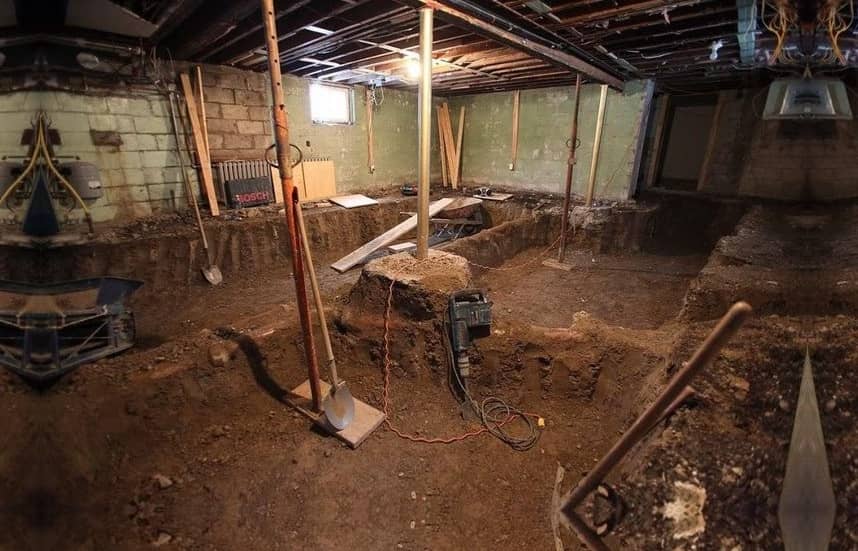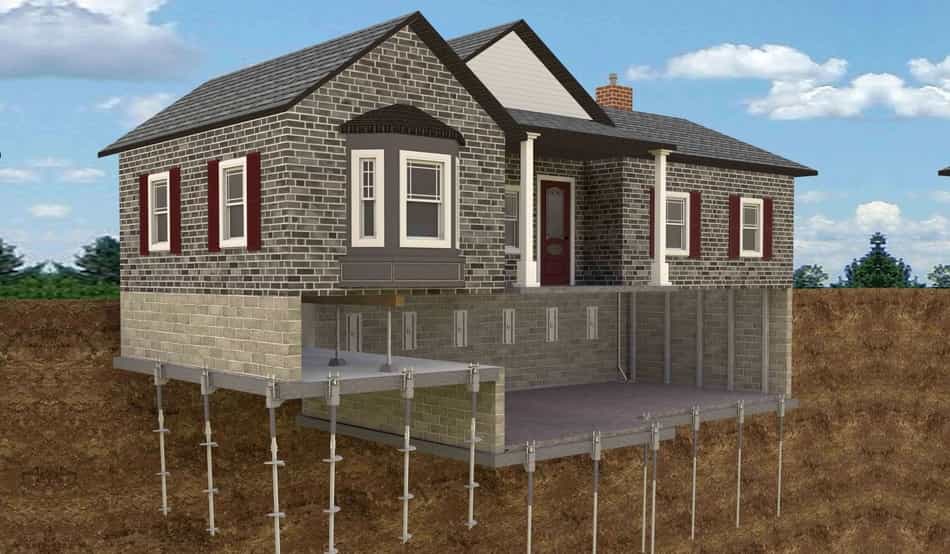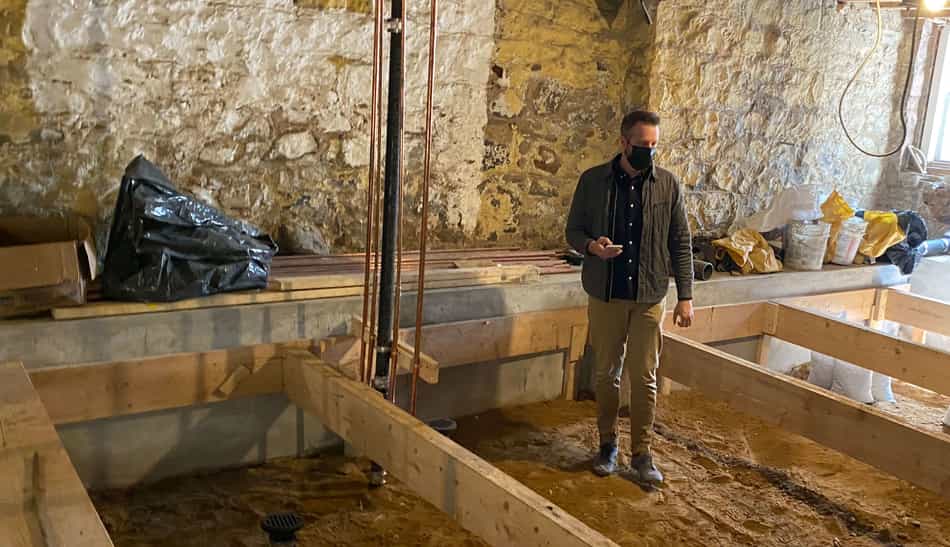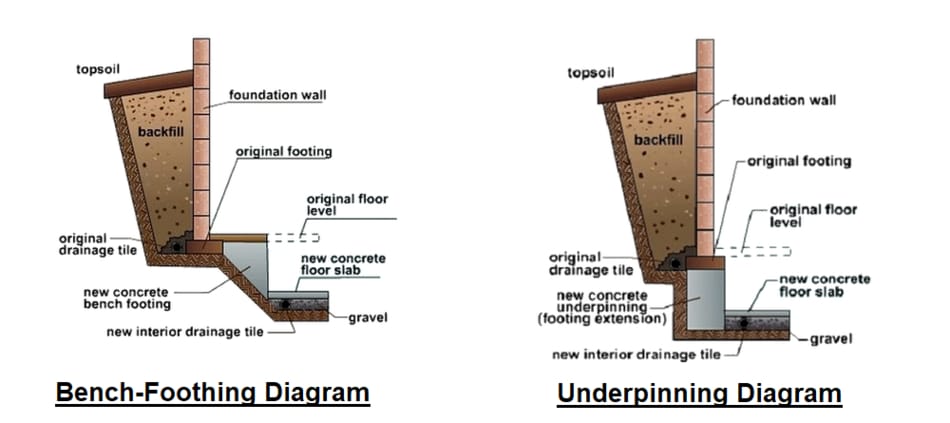Cost Of Lowering Basement Floor – Builder Explain

Today lowering the basement floor is nothing new, and many households are doing it to provide a little more headroom in their basements. Typically, house foundations are built at 8 feet (2.43m) deep space, but after placing floors and ceilings, that space decreases very rapidly.
While some people can find small places a little bit claustrophobic and uncomfortable, there are those who have nothing against it. But if you’re one of those people who decided to lower its basement floor to increase the overall comfortability of the space, we will explain how you can do this.
Most people opt to lower their basement floor because they want to make that area livable for either some family member or for rent. There are also building codes that require every room to have a minimum height that must not be below 7 feet (2.13m).
Therefore, if you have a basement lower than 8 feet, you do not meet the living space conditions, and you need to lower your basement floor. In this article, we’ll talk about how to lower a basement floor and how much it will cost you.
Table of Contents
How Much Does It Cost To Lower A Basement Floor?
So How Much Does it Cost To Lower A Basement Floor? Typically, lowering a basement floor can cost between $20,000 to $50,000. To underpin each square linear foot costs anywhere between $350 to $450. The things that affect the overall cost are the surface area, the labor, the difficulty of the job, and the number of walls you put up.
Lowering a basement floor usually costs thousands of dollars to do, but it will also give you a lot of benefits. Creating more space in your basement will get more headroom space since basements have very low ceilings. Although many factors depend on the cost, the price can vary anywhere between $55 to $80 per square foot.
| Lowering Basement Methods | DIY Cost | Complexity | Quality |
|---|---|---|---|
| 1. Underpinning | $80 per square foot | Hard | Good |
| 2. Benching | $25 per square foot | Medium-hard | Very Good |
Below we’ll go through a complete guide on lowering your basement and what budget you need to do it.
2 Ways How To Lower The Basement Floor
There are two ways on how you can lower the floor of your basement. The first method is underpinning, and the second method is benching. Both of these methods require structural changes and adjustments to the walls and footings so you can have usable space that is fully waterproofed. We will explain each method below.
1) Underpinning

Underpinning is the process of removing the footings that are located under the walls, where you remove the dirt under the footings, pour new footings, and fill the gaps with concrete. This method is most commonly used if you want to lower your basement floor several feet.
To avoid a house sink, by using the underpinning method to lower your basement floor, you need to do it in 4-foot sections. The best way is to skip 4 feet (1.21m), then do another 4-foot section, and then again skip 4-feet. After you finish this process around the basement, you’ll need to build in the gaps, then remove the sections, and lastly, build on those.
This method can be a very demanding job for someone with no experience in this area and low engineering skills. Therefore, if you have never done this before, we recommend calling a professional to do it. Although this procedure is expensive, for most who opt for it, it’s worth the money.
Note! The most expensive part of underpinning is the labor.
2) Bench-Footing

Bench footing is a method that is much more economical to lower your basement floor than underpinning. This method requires much less work, and it’s better. The bench-footing requires you to start digging a 45-degree angle under your existing basement wall fitting.
However deep you dig at a 45-degree angle, you need to know that you’ll need to dig also the exact depth outward from the wall. For example, if you dig a 6-foot deep angle your wall fitting, you’ll also have to dig 6-feet out from the wall too.
Once you are done digging, you’ll need to pour the footing, build the walls, and by using concrete, fill them out. The bench footing method is excellent because you won’t need to remove any of the dirt in your basement holding up your home. By using bench-footing, you will save time and money. Keep in mind that if you have no previous experience in doing jobs like that, it’s best to call a professional to do it for you.
For those who own a log cabin, you may be interested to read this article; Can Log Cabins Have Basements.
Step-by-Step How To Lower A Basement Floor
If you decide to lower your basement floor, there is really no limit how deep you can go, but the deeper you go, the harder it will be. So, lets see what are the steps that you need to follow when you are doing this.
Step 1: Break Up The Concrete Floor
The first step to lower your basement is to break up the concrete floor that you have. We recommend using a sledgehammer or a jackhammer to do this. This is necessary equipment, so you need to borrow it or buy it at the local hardware store if you don’t have it.
Step 2: Remove The Gravel
The second step is to remove the gravel. Make sure to remove all the gravel until you get to the dirt.
Step 3: Dig The Hole
Now you need to dig the hole that you have already determined in advance. Get the necessary digging material and get the job done.
Note! Always dig at least 8 to 10 inches deeper than you planned your floor to be. If you want the basement floor to be 6 inches lower, you’ll need to dig at least 16 inches deep.
Step 4: Lay The Gravel And Concrete
When you dig a depth hole to your liking, you’ll need to lay down about 5 inches of gravel. Pay attention to spread it out and make the surface even. Now, you need to lay down about 3 to 4 inches of concrete. The finished floor need’s to be near the same height as the footing. This way you’ll lower your basement floor 6 to 12 inches.
Is Benching Safer Than Underpinning?

Both of these methods are good, and they strengthen your foundation. Also, both benching and underpinning can add to your basement more space for renovations. Underpinning gives more living space which is costlier and takes more time, while benching adds less space, it’s quicker, and it cost less.
What To Do If I Can’t Afford Lowering My Basement?
As you already know by now, lower the basement is a costly investment. However, if you can’t afford to lower the basement floor, you can still create the illusion so that your basement room looks spacier, though. You can use quite simple and clever decorating tricks on how you can hide a low ceiling. Some of them are by using monotone themes, mirrors, furniture, and more.
Factors That Influence The Costs Of Lowering A Basement Floor
When you are lowering a basement floor you need to use a few factors that will increase the total cost of your project. The first factor that depends on the price is how much you will lower your basement floor. The deeper you go, the higher the price. Next is the labor, if you require more people for this job, the cost will increase.
Lastly, do you have accessibility to your basement? If you have easy access to your basement, the price will be lower. The price to hire someone for the survey is around $450. Also, other costs that will arise are hiring a team of builders that will execute the plan to lower the basement.
Will Lowering My Basement Add Value To My Property?
Lowering the basement can give you extra value to your property, but you’ll need to get a structural survey. In most cases, digging out a basement boost the property value. By having extra space, your basement can feel like an additional room where you can spend time.
However, if you decide to lower your basement, it should be carried out by a competent contractor. If something went wrong and an accident occurs, the house owner would be liable. Therefore, the assistance of a principal engineer is essential.
For those who want to learn more, you can also read The Cheapest Way To Build A Garage.
FAQ: People Also Ask
Is it possible To Lower A Basement Floor?
You can lower your basement floor, but this job needs to be done by a qualified foundation repair contractor with state-of-art construction methods and proper engineering data. By lowering the basement floor, you’ll get much more space in your basement.
Final Thoughts
Basement renovations are very common today, so many people opt to add extra space to their homes. In this article, we talked about how you can lower your basement floor and the most common ways to do it. Although we do not recommend that you do this alone, especially if you do not have any experience in homework, but to call a professional for help.
Lowering a basement floor is a sizable job to do, and it requires an expert, so you don’t damage the foundations of your home. I hope this article helped you, and if you have any additional questions, feel free to ask us.







